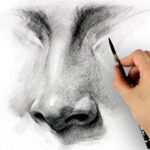The intersection of art and liberty presents a compelling dialogue that warrants exploration. Art functions not merely as a decorative endeavor but as a vital conduit for expressing individual freedoms and societal critiques. It invites us to contemplate the Art:6pxhi7ev_Bg= Liberty relationship between visual elements and their implications for identity and resistance. As we examine the contemporary relevance of such expressions, one must consider how these artistic narratives resonate within today’s social justice movements. What does this reveal about our collective understanding of freedom and the role art plays in shaping it?
The Concept of Liberty in Art
Art captures the essence of liberty, serving as a powerful medium through which individuals express their personal and collective freedoms. This expression often defies conventional norms, challenging the creative constraints imposed by society, politics, and culture. Through various forms of artistic expression—be it painting, sculpture, or performance—artists have historically used their craft to confront oppression and advocate for change.
The concept of liberty in art transcends mere aesthetics; it embodies the spirit of dissent and the yearning for social justice. Artists utilize their work to explore themes of identity, resistance, and empowerment, inviting audiences to reflect on their own notions of freedom. The interplay between freedom of expression and creative constraints can lead to profound insights, as artists navigate the delicate balance between personal vision and societal expectations.
Moreover, art serves as a unifying force, allowing diverse voices to resonate in a harmonious chorus advocating for liberty. In a world often fraught with division, the artistic pursuit of freedom fosters dialogue, encouraging individuals to envision a future where all expressions are celebrated without fear or limitation.
Ultimately, the concept of liberty in art remains a vital testament to the human spirit’s relentless quest for freedom.
Read Also: Art:5ykxs91ozyk= Palestine
Visual Elements and Their Art:6pxhi7ev_Bg= Liberty
The use of visual elements in artistic expression carries significant meaning, often serving as a language through which emotions and ideas are conveyed. In the pursuit of liberty, artists employ various artistic techniques to evoke powerful responses and inspire change.
Color symbolism, in particular, plays a pivotal role; for instance, blue may represent tranquility, while red can signify passion or rebellion. The careful selection of colors can reinforce a narrative of freedom, challenging societal norms and advocating for individual rights.
Moreover, artistic techniques such as contrast, composition, and texture contribute to the overall impact of a piece. Contrast can highlight the struggle between oppression and liberation, while composition guides the viewer’s eye and shapes their emotional journey through the artwork.
Texture may evoke tactile sensations, allowing audiences to feel the weight of their experiences.
Ultimately, the visual elements in art are not merely decorative; they are imbued with meaning and intent. By understanding these elements, one can appreciate how artists channel their visions of freedom and resistance, creating a profound dialogue that resonates with those yearning for liberty.
Contemporary Relevance of the Artwork
In today’s sociopolitical climate, the themes of liberty and resistance depicted in artwork resonate profoundly with contemporary audiences. As movements advocating for social justice gain momentum globally, the artwork serves as a powerful vehicle for expressing the collective yearning for personal freedom. The intrinsic value of art lies not only in its aesthetic appeal but in its capacity to provoke thought and inspire action.
Artworks that confront issues of oppression and inequality provide critical political commentary, challenging viewers to reflect on their own values and the societal structures around them. Through cultural expression, artists articulate the struggles and aspirations of marginalized communities, transforming personal narratives into universal messages of hope and empowerment.
This dynamic interplay between art and activism amplifies the voices of those seeking change, fostering a sense of solidarity among diverse groups. In an era where the quest for liberty continues to unfold, the relevance of such artwork is undeniable.
It serves as both a mirror reflecting societal issues and a catalyst for dialogue, encouraging individuals to engage with their surroundings and advocate for a more just and equitable world. Ultimately, art remains a vital cornerstone in the ongoing pursuit of freedom and social transformation.
Read Also: Art:5qykmrcfxeg= Famous Paintings
Conclusion
In the intricate tapestry of art, liberty emerges as a vibrant thread, weaving together diverse narratives and emotions. Each brushstroke and Art:6pxhi7ev_Bg= Liberty resonates like a heartbeat, echoing the struggles and triumphs of those who seek freedom. As canvases transform into battlegrounds for social justice, a collective voice rises—an unyielding chorus advocating for change. Ultimately, the interplay of color and form ignites a spark of hope, illuminating the path toward a more inclusive and harmonious society.







